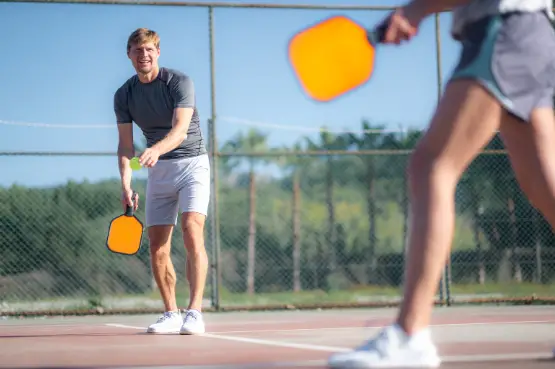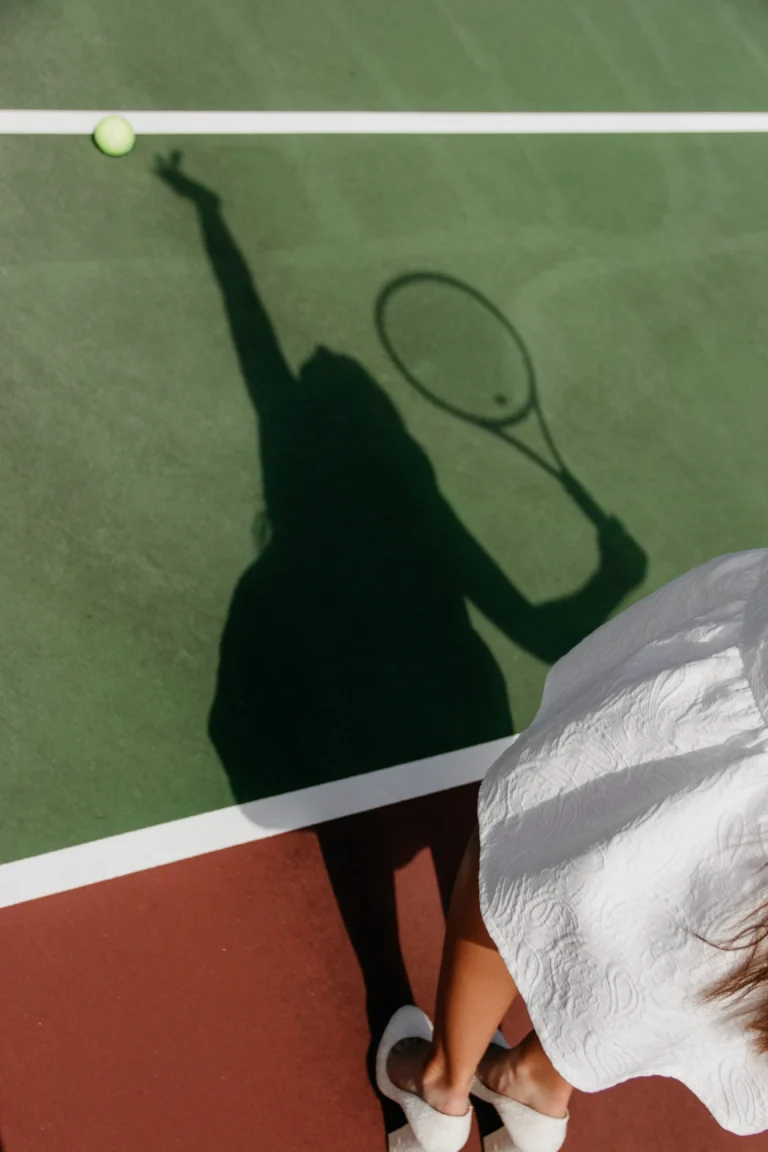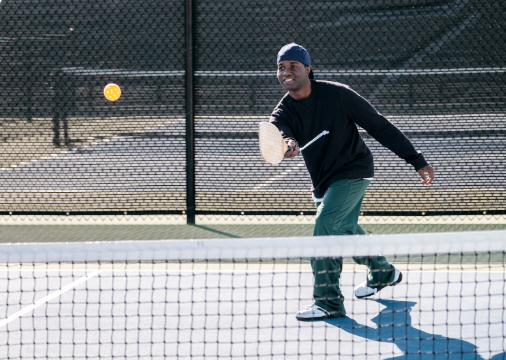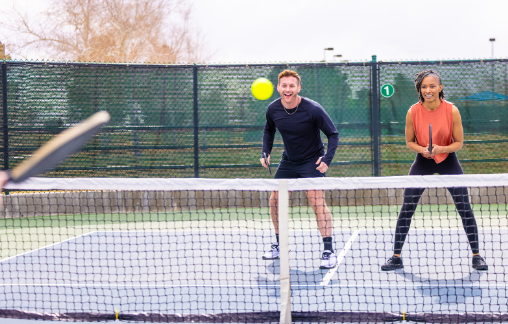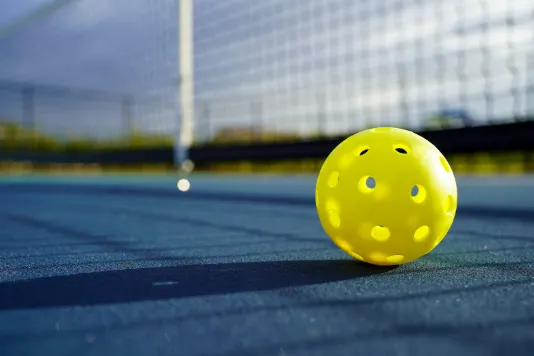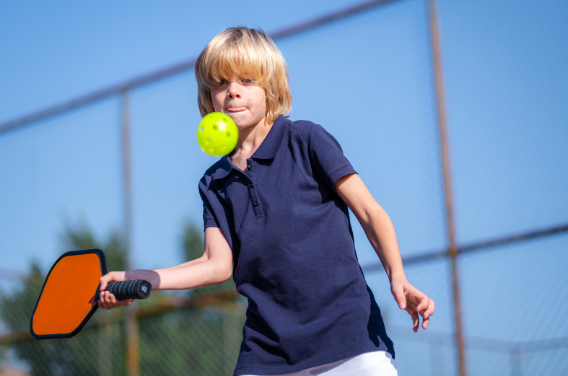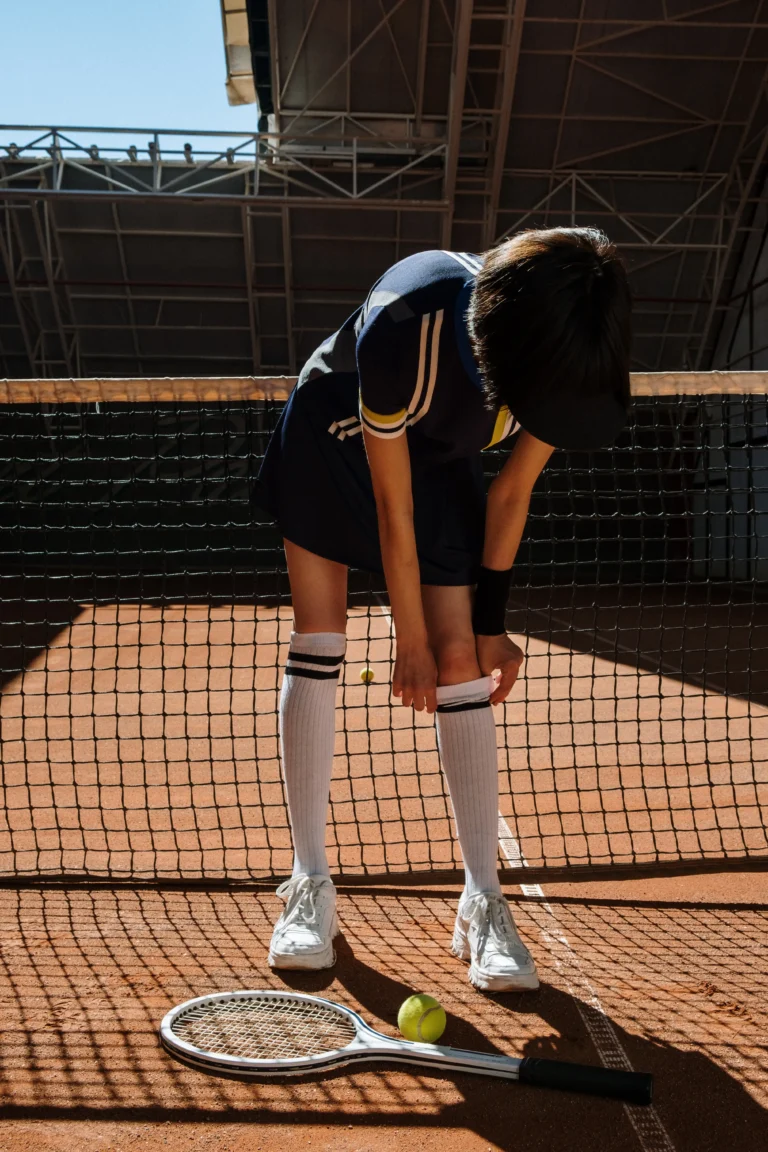Drill for the Win: Beginner Pickleball Drills and Exercises
Drill for the Win: Beginner Pickleball Drills and Exercises” is a dynamic and insightful guide tailored for those embarking on their pickleball journey. This sport, which brilliantly fuses elements from tennis, badminton, and table tennis, has gained immense popularity for its easy-to-learn nature and social aspects. However, mastering pickleball requires more than just understanding the basic rules – it demands practice, strategy, and physical conditioning, especially for beginners eager to improve their game.
In this comprehensive introduction, we will explore a variety of beginner-friendly drills and exercises designed to enhance fundamental pickleball skills. These drills focus on developing core aspects of the game, such as serving accuracy, volley consistency, and groundstroke precision. They are structured to gradually build a player’s confidence on the court, enhancing their ability to respond effectively during game play.
Moreover, the guide emphasizes the importance of footwork and positioning, understanding that good movement on the court is a key determinant of a player’s success. We’ll introduce exercises that improve agility, balance, and coordination, crucial for both offensive and defensive plays in pickleball.
For those new to the sport, this guide also offers practical advice on how to approach learning and practicing, fostering a mindset geared towards continuous improvement. We understand that starting a new sport can be daunting, so we aim to make the learning process both enjoyable and rewarding.
“Drill for the Win” is more than just a collection of exercises; it’s a roadmap for beginner pickleball players to build their skills, enhance their understanding of the game, and enjoy their journey in the world of pickleball.
Key Takeaway: “Drill for the Win” is an essential guide for beginners in pickleball, offering a range of drills and exercises to improve basic skills, enhance court movement, and develop strategic game play. It’s a practical tool for building confidence, honing technique, and fostering a love for the game, making the journey of learning pickleball both enjoyable and effective.
The Basics of Pickleball: Understanding the Game
Pickleball, a dynamic and engaging sport, has captivated enthusiasts worldwide with its unique blend of simplicity and strategic depth. Understanding the basics of pickleball is crucial for anyone looking to dive into this rapidly growing sport, which uniquely caters to a wide range of ages and skill levels.
Pickleball Rules and Scoring: The rules of pickleball are straightforward, making it an accessible sport for beginners. Played on a badminton-sized court with a modified tennis net, the game can be played in singles or doubles. Points are scored only by the serving side and games typically go up to 11, 15, or 21 points. One of the distinctive features of pickleball is the ‘non-volley zone’ or ‘kitchen,’ a seven-foot area on either side of the net where volleying is prohibited. This rule adds a strategic layer to the game, encouraging a blend of power and precision.
Equipment for Pickleball: The equipment required for pickleball is minimal, adding to its accessibility. Players use a paddle, which is larger than a ping-pong paddle but smaller than a tennis racquet, and a lightweight plastic ball with holes, similar to a Wiffle ball. The paddle’s material varies from wood to composite or graphite, each offering different levels of power and control.
Suitability for All Ages and Skill Levels: Pickleball’s appeal lies in its inclusivity. The smaller court size and the lightweight equipment make it less physically demanding than tennis, ideal for older players or those with limited mobility. For younger and more competitive players, pickleball offers fast-paced and strategic gameplay. This inclusivity fosters a diverse community of players, enriching the sport’s social aspect.
Importance of Practice and Drills: To master pickleball, regular practice and drills are essential. Drills help in refining skills like serving, volleying, and strategic shot placement. They also improve hand-eye coordination and agility, crucial for reacting swiftly during games. For beginners, drills are an excellent way to embed the fundamentals of the game, while advanced players use them to hone their skills and strategies.
Pickleball is more than just a game; it’s an opportunity for physical exercise, social interaction, and continuous skill development. Whether you’re a beginner eager to learn or an experienced player looking to sharpen your game, understanding and practicing the basics of pickleball is the first step towards enjoying this captivating sport.
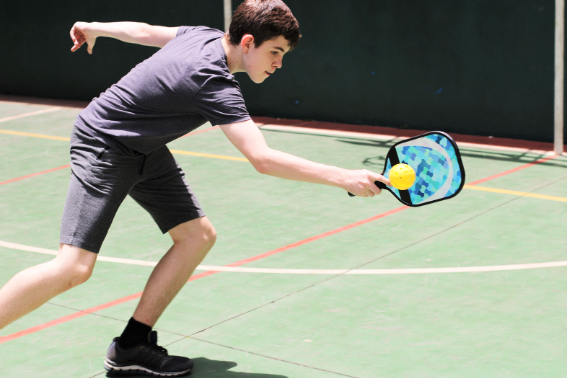
Essential Pickleball Drills for Beginners
For beginners in pickleball, mastering the fundamentals through drills is crucial. These drills are designed to improve specific skills such as serving, volleying, and groundstrokes, forming the backbone of effective play. Here, we break down essential pickleball drills, providing step-by-step instructions and tips for executing them effectively.
1. Serving Drill: The serve in pickleball sets the tone for each point. Beginners should focus on consistency and placement.
- Stand behind the baseline, feet shoulder-width apart.
- Practice serving to different areas of the service box, aiming for depth and accuracy rather than power.
- Repeat the drill, serving 20 times to each section of the box.
- Tip: Focus on a fluid motion and hitting the center of the paddle. Consistency is key.
2. Volleying Drill: Volleying is crucial for controlling the net area.
- With a partner, stand at the non-volley zone line, facing each other.
- Gently volley the ball back and forth, focusing on control and keeping the ball in play.
- Aim for a series of 10 consecutive volleys without errors.
- Tip: Keep your paddle up and in front of you, and use your paddle face to direct the ball.
3. Groundstroke Drill: Groundstrokes are fundamental for pickleball rallies.
- Stand at the baseline and have a partner or a ball machine send balls to you.
- Alternate between forehand and backhand groundstrokes, aiming to place the ball deep in the opposite court.
- Focus on hitting 20 consistent strokes on each side.
- Tip: Bend your knees and follow through with your swing for better control.
4. Dinking Practice: Dinking is a precision shot in pickleball, essential for setting up offensive plays.
- From the non-volley zone, practice softly hitting the ball just over the net.
- Aim to make the ball land close to the net in your opponent’s non-volley zone.
- Practice this drill for 10-15 minutes, focusing on accuracy and touch.
- Tip: Use a gentle grip and keep your wrist firm to control the dink.
By incorporating these drills into your practice routine, you can develop a well-rounded skill set in pickleball. Remember, consistency in practicing these drills is more important than trying to perfect them in a short time. Over time, these exercises will greatly enhance your playing capabilities and enjoyment of the game.
Pickleball Exercises for Improved Physical Fitness
Physical fitness plays a vital role in enhancing pickleball performance. As a sport that requires quick reflexes, agility, and endurance, pickleball players benefit significantly from being in good physical shape. By focusing on specific exercises that improve these areas, players can see substantial improvements in their game.
1. Impact of Physical Fitness on Pickleball Performance: Being physically fit enhances several aspects of pickleball performance. Improved agility allows players to move quickly across the court, essential for reaching shots and positioning. Strength, particularly in the core and upper body, contributes to more powerful and controlled shots. Endurance enables players to maintain a high level of play throughout a match, which can be particularly crucial in tournaments or longer games.
2. Recommended Exercises for Pickleball Players:
- Agility Drills: Ladder drills and cone exercises improve footwork and speed. These drills can be varied to mimic movements specific to pickleball, like lateral shuffles or quick forward and backward motions.
- Strength Training: Focus on exercises that build core strength, such as planks or Russian twists, and upper body strength, like push-ups or light dumbbell exercises. Stronger muscles aid in more forceful and controlled volleys and serves.
- Endurance Workouts: Incorporating cardiovascular exercises like jogging, cycling, or swimming can boost stamina. This endurance is crucial for maintaining energy levels during extended play.
- Flexibility and Balance: Yoga or Pilates can enhance flexibility and balance, reducing the risk of injuries and improving overall body control.
3. Integrating Exercises into a Training Routine: To effectively integrate these exercises into a training routine, players should aim for a balanced approach. A typical week might include two to three days of strength and agility training, interspersed with endurance workouts. Flexibility exercises can be a daily routine, often serving as a great warm-up or cool-down activity. It’s important to remember that rest days are as crucial as training days, allowing the body to recover.
By focusing on exercises that target agility, strength, endurance, flexibility, and balance, pickleball players can enhance their physical fitness, leading to improved performance on the court. Regularly incorporating these exercises into their training not only boosts their game but also contributes to overall health and well-being.
Strategies and Tips to Enhance Your Pickleball Game
Enhancing your pickleball game goes beyond mastering the physical aspects; it involves strategic thinking and mental agility. Advanced strategies, coupled with a strong mental game, can significantly elevate your performance. Here are some insightful strategies and tips for intermediate to advanced pickleball players.
1. Advanced Positioning and Shot Selection:
- Smart Positioning: Understanding court positioning can give you a strategic edge. Position yourself in a way that minimizes your weaknesses and maximizes your strengths. For example, if you have a strong backhand, position yourself slightly off-center to utilize it more.
- Shot Selection: Develop an intuitive sense of when to play defensive shots like dinks and when to go for more aggressive drives or smashes. Anticipating your opponent’s moves and varying your shots can keep them off-balance.
2. Mental Game Tips:
- Staying Focused: Mental toughness is critical in pickleball. Practice mindfulness and concentration drills to maintain focus throughout the match. Techniques like deep breathing or visualizing successful shots can help in stressful situations.
- Competitive Mindset: Develop a resilient mindset. Treat each point as a new opportunity, regardless of the score. Learning from mistakes rather than dwelling on them can keep you competitive and adaptive.
3. Advice from Professionals:
- Anticipate, Don’t React: Many professional players emphasize the importance of anticipation over reaction. By predicting your opponent’s shots, you can position yourself better and prepare your return more effectively.
- Work on Weaknesses: Pros often suggest focusing on your weakest areas during practice sessions. Turning your weaknesses into strengths can make you a more formidable player.
- Serve and Return Strategy: A well-placed serve or return can set the tone for the point. Practice placing your serves and returns strategically to gain an early advantage.
In addition to these strategies, continuous learning and adaptation are key. Keep up with new techniques and strategies in pickle ball, and don’t hesitate to seek advice or coaching. Remember, consistency and a willingness to learn are your greatest allies in improving your pickle ball game. By applying these advanced strategies and maintaining a strong mental game, you’ll not only enhance your performance but also find greater enjoyment in the sport.
Integrating Drills into Your Practice Sessions
Integrating drills into your pickleball practice sessions is essential for skill development and game improvement. A well-structured practice schedule that combines drills, exercises, and actual gameplay can lead to significant progress. Here are some guidelines for creating an effective practice routine.
1. Creating a Balanced Practice Schedule:
- Diversify Drills and Play: Allocate specific days for focused drills and other days for playing games. For instance, dedicate two days a week to drills targeting specific skills and two days to playing matches.
- Time Management: Divide your practice sessions into segments – warm-up, drills, match play, and cool down. This structure ensures a comprehensive approach to training.
2. Consistency and Tracking Progress:
- Regular Practice: Consistency is key in skill development. Aim to practice multiple times a week, setting a routine that fits into your lifestyle.
- Progress Tracking: Keep a log of your drills, noting improvements and areas needing attention. This can be as simple as a notebook or a digital app.
3. Balancing Solo Drills and Match Play:
- Solo Drills: When practicing alone, focus on drills that improve your strokes, footwork, and endurance. Use a wall or ball machine for consistent stroke practice.
- Group Sessions: Playing actual games with others provides experience and helps apply the skills learned in drills. Try to play with a variety of opponents to experience different playing styles.
4. Adapting the Routine:
- As you progress, adjust your routine to focus on more advanced drills or address specific weaknesses. Flexibility in your practice schedule is important as your skills evolve.
Remember, a well-rounded practice schedule that balances drills with actual play, maintained with consistency and tracked for progress, is instrumental in improving your pickleball game. Regularly reviewing and adjusting your practice routine based on your development ensures continual growth and enjoyment of the sport.
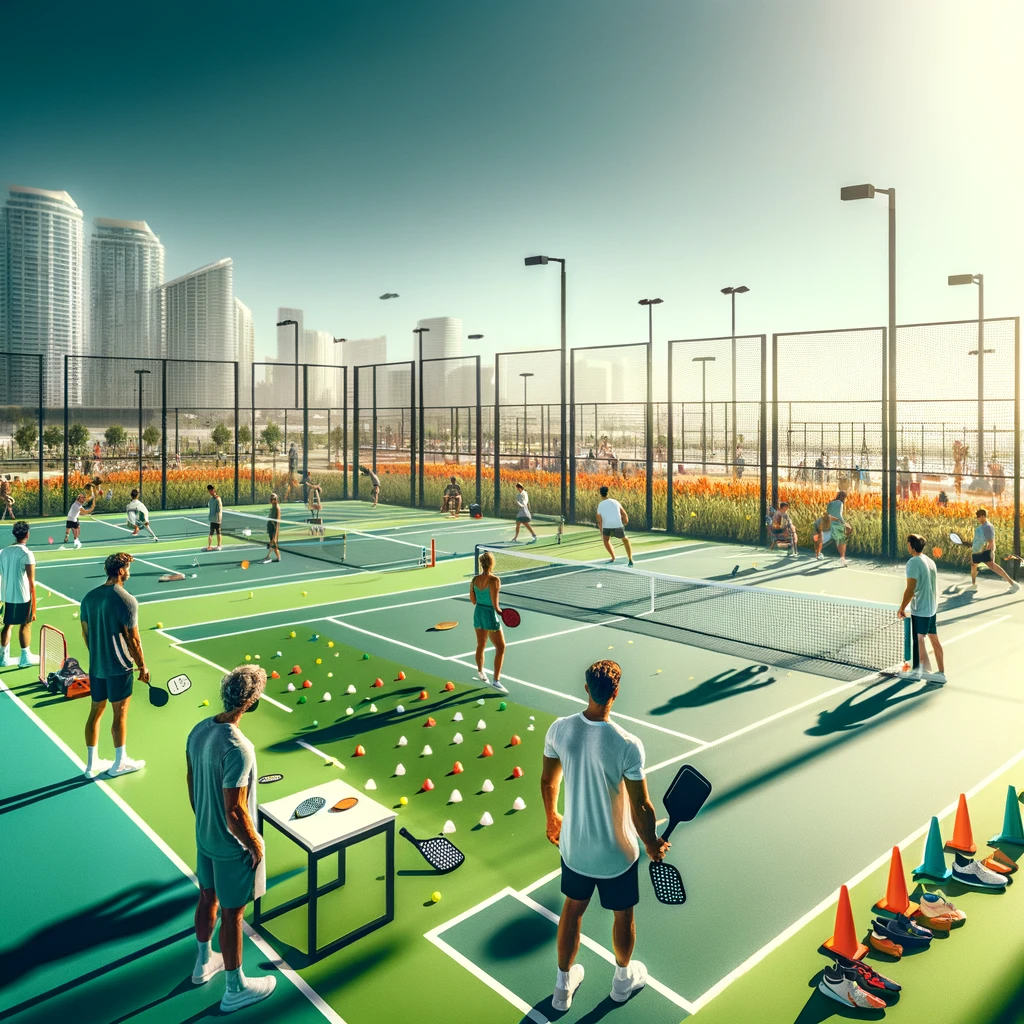
Safety and Injury Prevention in Pickleball
Pickleball, while enjoyable and engaging, is a physical activity that carries a risk of injury, especially if proper precautions are not taken. Understanding common injuries and implementing safety measures are essential for players at all levels.
1. Common Pickleball Injuries and Prevention:
- Muscle Strains and Sprains: These are among the most common injuries in pickleball, often occurring in the legs and lower back. Preventive measures include proper stretching, using correct technique, and wearing supportive footwear.
- Tendonitis: Repetitive motions can lead to tendonitis, especially in the shoulders, elbows, and knees. To prevent this, ensure a good playing technique and consider using equipment that reduces impact, such as paddles with good vibration dampening.
- Joint Injuries: Knee and ankle injuries can occur due to the quick, multidirectional movements in pickleball. Strengthening exercises for the leg muscles and core, along with agility drills, can help prevent these injuries.
2. Importance of Warm-Up and Cool-Down Exercises:
- Warm-Up: A proper warm-up routine prepares the body for the physical exertion of pickleball. It should include light cardiovascular activities like jogging or skipping, followed by dynamic stretching to improve range of motion.
- Cool-Down: Post-game, cool-down exercises help in gradually lowering the heart rate and stretching the major muscle groups used. This practice aids in recovery and reduces the risk of muscle stiffness and soreness.
3. Seeking Professional Advice:
- Persistent or Severe Pain: If you experience persistent or severe pain during or after playing, it’s important to consult a healthcare professional. Early intervention can prevent further injury and facilitate a quicker return to the game.
- Rehabilitation Advice: In the case of an injury, professional guidance on rehabilitation exercises is crucial. A physical therapist or sports medicine specialist can provide tailored advice to ensure a safe and effective return to play.
Preventing injuries in pickleball involves a combination of proper warm-up and cool-down routines, using correct techniques, and listening to your body. Regular strength and flexibility training, along with appropriate rest and recovery, are also key components. By taking these precautions, players can enjoy the game while minimizing the risk of injury.
Conclusion and Encouragement for Continuous Improvement
“Drill for the Win: Beginner Pickleball Drills and Exercises,” it’s essential to emphasize the importance of continuous improvement in any skill, akin to the evolving nature of games like car-parking-multiplayer-mod-apk. Just as players in this popular mobile game continually adapt and enhance their driving and parking skills through various challenges and environments, pickleball players too must embrace a mindset of ongoing learning and development.
The journey of mastering pickleball, much like mastering complex parking scenarios in the game, is one of incremental progress and persistent practice. Each drill and exercise in this guide is a step towards greater skill and confidence, akin to how each level in car-parking-multiplayer-mod-apk offers new challenges to refine and test your driving abilities. The satisfaction in pickleball comes not just from winning matches, but from witnessing your personal growth and the improvement of your skills over time.
As players of car-parking-multiplayer-mod-apk understand the value of patience, practice, and perseverance in mastering virtual parking skills, so should pickleball players appreciate these virtues in their sport. Continual practice, learning from mistakes, and adapting to different playing styles and opponents are key.
Remember, the journey in pickleball, much like any skill or game, is about progress, not perfection. Every session on the court is an opportunity to learn something new, just as every game in car-parking-multiplayer-mod-apk presents a chance to sharpen your skills. Embrace the journey with enthusiasm and a commitment to continuous improvement.
Key Takeaway: Just as players in car-parking-multiplayer-mod-apk continuously improve their skills through challenges, pickleball players should adopt a similar approach. Embrace the process of learning and improving, understanding that each practice, each drill, is a step towards mastery. The joy of pickleball, as in any game, lies in the journey of continual improvement and personal growth.

